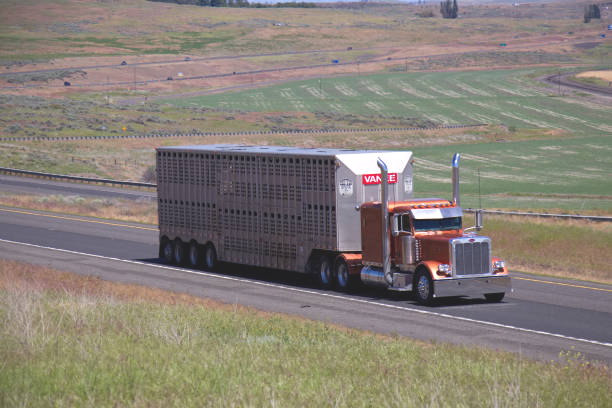Source: Iowa State University
AMES, IA – Beef cattle are likely to be transported at least once during their lives and are often moved several times at different stages of production. During each transition, they may travel for hours, standing in moving, vibrating trailers. Upon arrival, their new situations and pen mates are unfamiliar. Not surprisingly, during the hours and days post-transit, fatigued, stressed animals tend to eat and drink less and are more susceptible to disease.
Research underway at Iowa State University is investigating the potential of boosting zinc levels before transport as a low-cost, easy way to ease animals’ muscle fatigue during transit, improve their health and increase their long-term growth. The new study, led by Stephanie Hansen, professor of animal science, builds on her earlier work reported in the Journal of Animal Science, which found that increasing zinc supplementation after transport can improve the performance of growing feedlot steers.
Zinc is a natural mineral with low toxicity known to assist muscle growth and recovery after exercise. Cattle fed on forage and hay naturally consume zinc at higher levels, but it is generally lower in the corn-based diets given to feedlot animals.
After learning that higher levels of zinc in cattle diets post-transport could improve cattle health and productivity, Hansen wondered if increasing zinc levels before transport would have similar benefits.
She has completed the first year of a three-year project to find out. The study looks at cattle trucked for either eight or 18 hours. Prior to being moved, their diets were supplemented with two levels of zinc. A control set of animals did not receive any additional zinc. After the cattle reached their destination, each one was followed to identify post-transit performance (such as standing behavior and feeding activity), feed intake and growth. Biochemical characteristics related to blood and muscle metabolism were also analyzed.
Preliminary results show animals fed extra zinc before transit had significant improvements in performance and indicators of health. After a 42-day “preconditioning” period prior to trucking, cattle fed 100 ppm of Zn from zinc sulfate were 13 pounds heavier. That would mean more pounds of animal to sell.
In their prior study, Hansen found zinc decreased lactate, a marker of muscle fatigue. While zinc has not been found to impact lactate in the present study, the zinc-fed cattle did recover their feed intake more quickly than non-zinc-fed animals after arriving at their new location, replicating earlier findings that zinc status seems to drive feed intake. This is essential for cattle to replenish energy stores lost during trucking.
“The results of the study so far are compelling. They strongly support the value of boosting zinc supplementation pre-transit as an inexpensive and practical way to improve animal health, performance and welfare,” Hansen said.
If the project continues to show these benefits, she is interested in working with ranchers on a preconditioning nutritional program for beef cattle that could qualify animals for a price premium.
Animal science graduate students in Hansen’s lab assisting with the project include Allison Baumhover and Brock Ortner. They will give presentations on their work at the American Society of Animal Science Meeting in Calgary, Alberta, in late July.
This grant, supported by USDA National Institute of Food and Agriculture, builds on Hansen’s prior study, funded by industry.
“Our earlier project was important to develop data that I could use to apply for this USDA grant, which has more of a mechanism-of-action focus, with stronger implications for animal welfare,” Hansen said. “I really appreciate it when we can provide service to the industry while collecting information that also advances science.”















